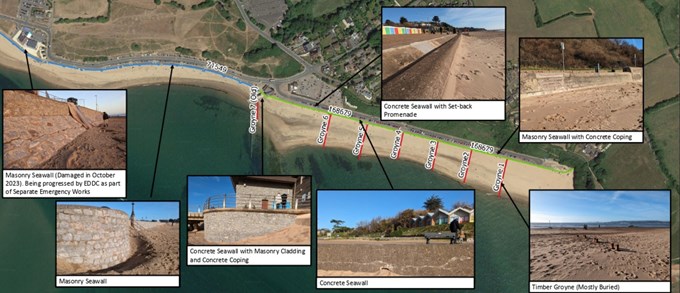Information Exmouth’s coastal processes and defences
Content
This page explains the natural processes that pose coastal erosion and flood risks to Exmouth, as well as an overview of the condition of the town's sea defences. The information on this page was presented on boards at the first Exmouth BMP Update drop-in event at the Town Hall on 15 February.
Exmouth’s coastal processes
Coastal processes are the ways tides, currents, waves, and sediment interact around the shoreline. Sediment is transported around the coastal system which leads to erosion and accumulation in different areas at different times.
These natural processes are responsible for the dynamic nature of Exmouth Beach, where sand accumulates and erodes over time, causing beach levels to raise and lower.
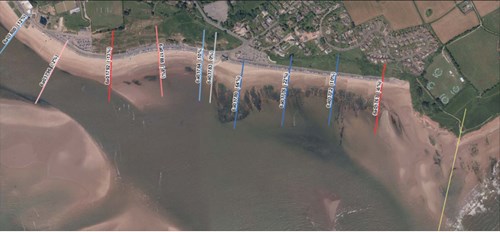
The picture above (from the South West Regional Coastal Monitoring Programme Annual Report 2022) shows changes to Exmouth beach, with accumulation shown with a blue line, and erosion shown with a red line.
Sediment transport processes
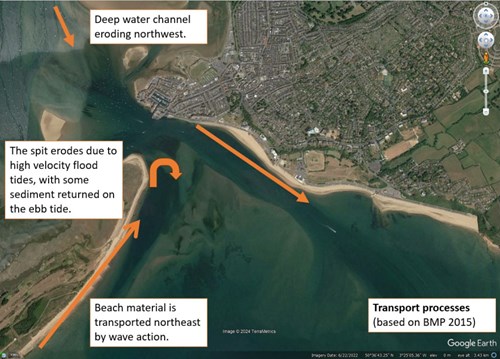
The picture above illustrates how sediment is transported along Exmouth’s seafront.
Areas of sediment accumulation
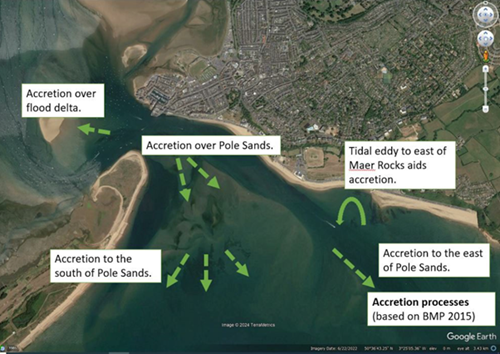
The picture above illustrates the areas where sediment accumulates.
Influence of tides

The image above shows the areas where sediment transport is driven by the tides.
Influence of waves
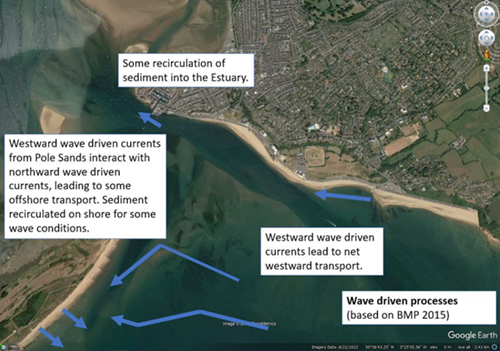
The image above shows the areas where sediment transport is driven by waves.
Exmouth’s coastal defences
Exmouth’s BMP Update is looking at the current condition of the town’s sea defences, how they are performing now and how they will perform in the future, considering the impact of rising sea levels. The condition of the defences generally ranges from poor to good.
The beach provides protection to the toe of the sea defences, helping to minimise the energy of waves before they are hit.
The picture below illustrates the existing sea defences from Exmouth Marina to The Maer:
- Masonry Sea Wall, fronted by Concrete Toe
- Sheet Piles and Rock Armour
- Timber groye
- Masonry seawall with concrete toe
- Concrete seawall with masonry cladding, and concrete paraphet
- Concrete wall with walkway
- Concrete wall with masonry cladding, concrete coping and rock armour toe
- Brick wall
- Rock groyne
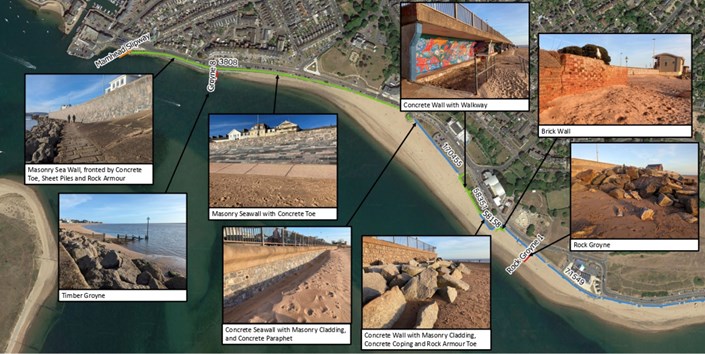
The picture below shows the existing sea defences from The Maer to Orcombe Point:
- Masonry seawall (damaged in October 2023). Being progressed by EDDC as part of separate emergency works
- Masonry seawall
- Concrete seawall with masonry cladding and concrete coping
- Concrete seawall with set back promenade
- Concrete seawall
- Masonry seawall with concrete coping
- Timber groyne (mostly buried)
